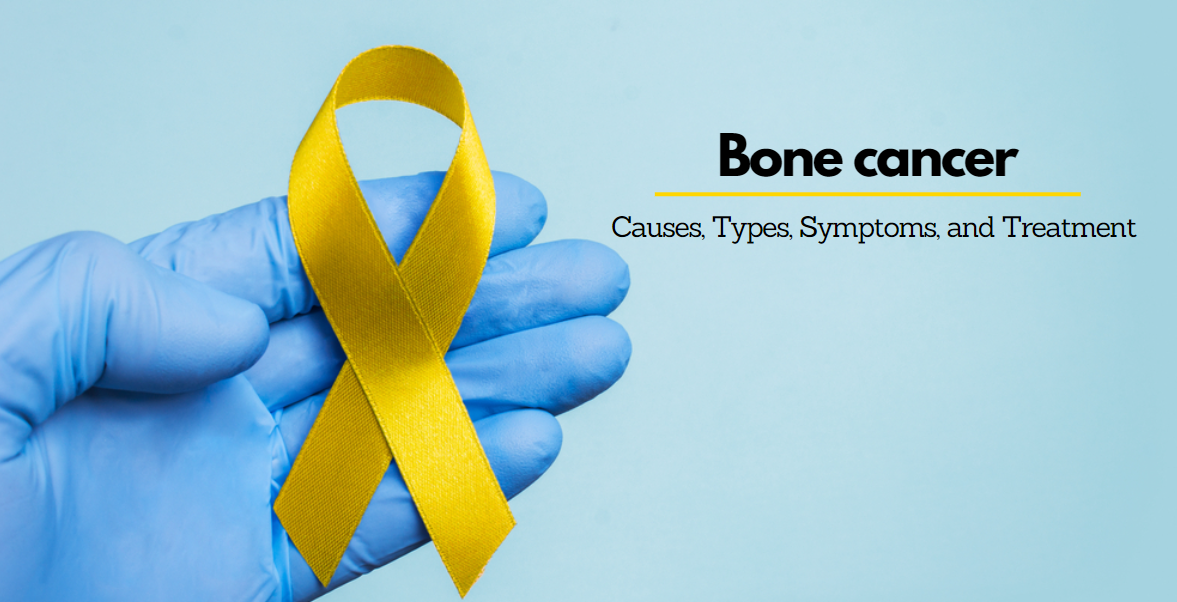Bone Cancer: Causes, Types, Symptoms, and Treatment
Table of Contents
Bone Cancer
Bone cancer is a malignant tumour that arises from the cells that make up the bones in the body. Primary bone cancer is the real kind of cancer that affects the bones. Secondary bone cancer, which develops after cancer has spread from another part of the body to the bones, requires a different course of bone cancer treatment than primary bone cancer. Less than 1% of all cancers are bone cancers, which are extremely rare. Adult bone cancer is relatively uncommon. Malignant tumours are less frequent than benign tumours. In the pelvis or the long bones of the arms or legs, bone cancer typically develops.
Causes Of Bone Cancer
Bone cancer typically has no known cause. A mistake or mutation in the DNA of bone cells, the control region, or the cellular building blocks is where the majority of cancers start. Uncontrolled growth of abnormal bone cells may result from changes in cellular DNA that affect how well bone tissue cells divide and multiply into new cells.
Types of Bone Cancer
Bone cancer can take many different forms, some of which are more common in adolescents and young adults. Other bone cancers mostly affect people over 45 who are adults.
- Bone cancer is extremely rare, but the varieties that we encounter most frequently include:
- Near the knee, where growth is accelerated in preteens and teenagers, osteosarcoma frequently manifests.
- Chondrosarcoma typically affects adults over 50 and starts in the connective tissue in joints.
- The most common age groups for Ewing sarcoma to develop are children and adolescents.
With survival rates ranging from 50% to 85%, all three types are potentially fatal. Early cancer detection increases survival rates, so if you experience bone pain or suspect bone cancer, seek medical attention right away.
Symptoms Of Bone Cancer
Since bone cancer is not always symptomless, diagnosis can be challenging.
- Persistent bone pain or nighttime-only bone pain.
- Lump on the bone that may or may not be painful and that may appear and disappear over time.
- A swollen arm or leg may make it difficult to move that limb.
- Bruising and swelling around an injured area.
- Ongoing fever, Fatigue
- Unaccounted-for weight loss
Bone Cancer Stages
It is staged in the primary. These various stages describe where cancer is located, how it behaves, and how much it has harmed other body parts:
stage 1: Cancer is not yet spread, at stage 1.
Stage 2: While cancer has not spread, other tissues are in danger.
Stage 3: Cancer has already affected one or more bone regions.
Stage 4: Cancer has spread to additional organs or tissues, such as the lungs or brain.
The following methods may be used by your orthopaedic doctor to determine the stage of bone cancer and to choose the best course of treatment:
Bone Cancer Treatment
In order to determine the location and dimensions of the bone tumour, your doctor will request specific imaging tests. To confirm the tumour, you might undergo a variety of tests, including a bone scan, CT scan, MRI, PET scan, X-ray, and more. Your bone tumour specialist will determine the best course of action for bone cancer once it has been diagnosed. These may consist of:
Surgery
The bone tumour with cancer may be surgically removed by the surgeon. The surgeon typically removes some healthy tissues around the cancerous tissues in addition to a small portion of the cancerous tissues. A piece of bone from another area of the body or artificial implants (endoprosthesis) made of metal and plastic are then used by the surgeon to replace the missing bone. For the treatment of bone cancer, it is occasionally necessary to amputate the entire limb. Following the procedure, the doctor will use a prosthetic, or artificial limb, in this instance.
Chemotherapy
One of the treatments for bone cancer is chemotherapy. To eradicate bone cancer cells, the doctor administers chemotherapy medications through injection. The majority of the time, there is a mix of several chemotherapy medications. Chemotherapy medications are injected into veins.
Radiation Therapy
To eliminate the cancer cells that are present in the affected area of the body, radiation treatment uses protons and X-rays. The patient is placed on a table and lying down during this therapy. The beams are then pointed at the precise locations on the body by enormous devices that move around them. When treating secondary bone cancer, radiation therapy may be used alone, in conjunction with surgery, as a primary treatment (Ewing sarcoma), or as a palliative approach.
Targeted Therapy
During this therapy, the patient receives some targeted medications to target particular abnormalities seen in the cancer cells. To eradicate cancer-causing cells, this therapy can be used with chemotherapy.
You can also check our post on: The Invisible Illness: Unpacking the Symptoms of Vasculitis


